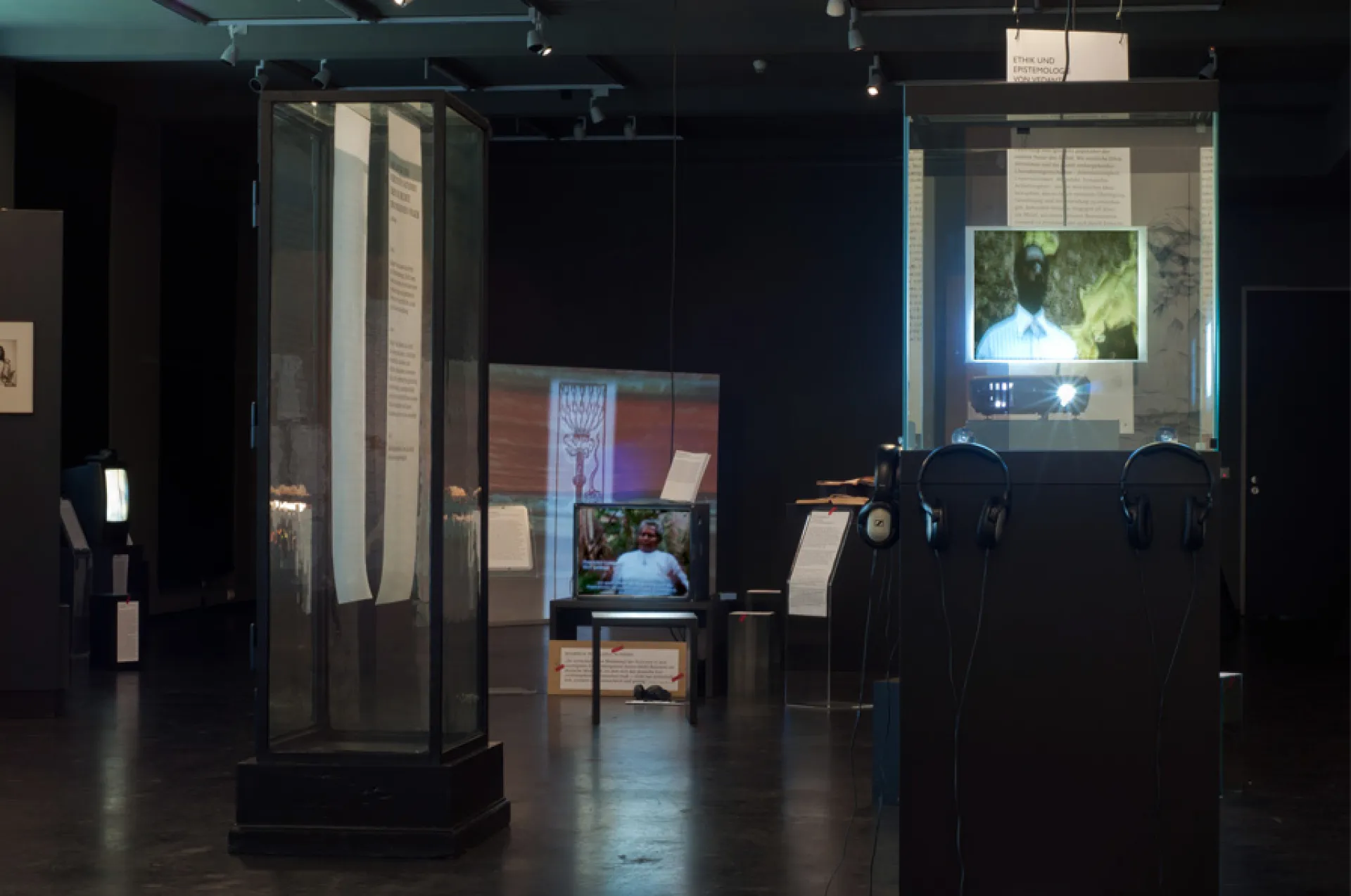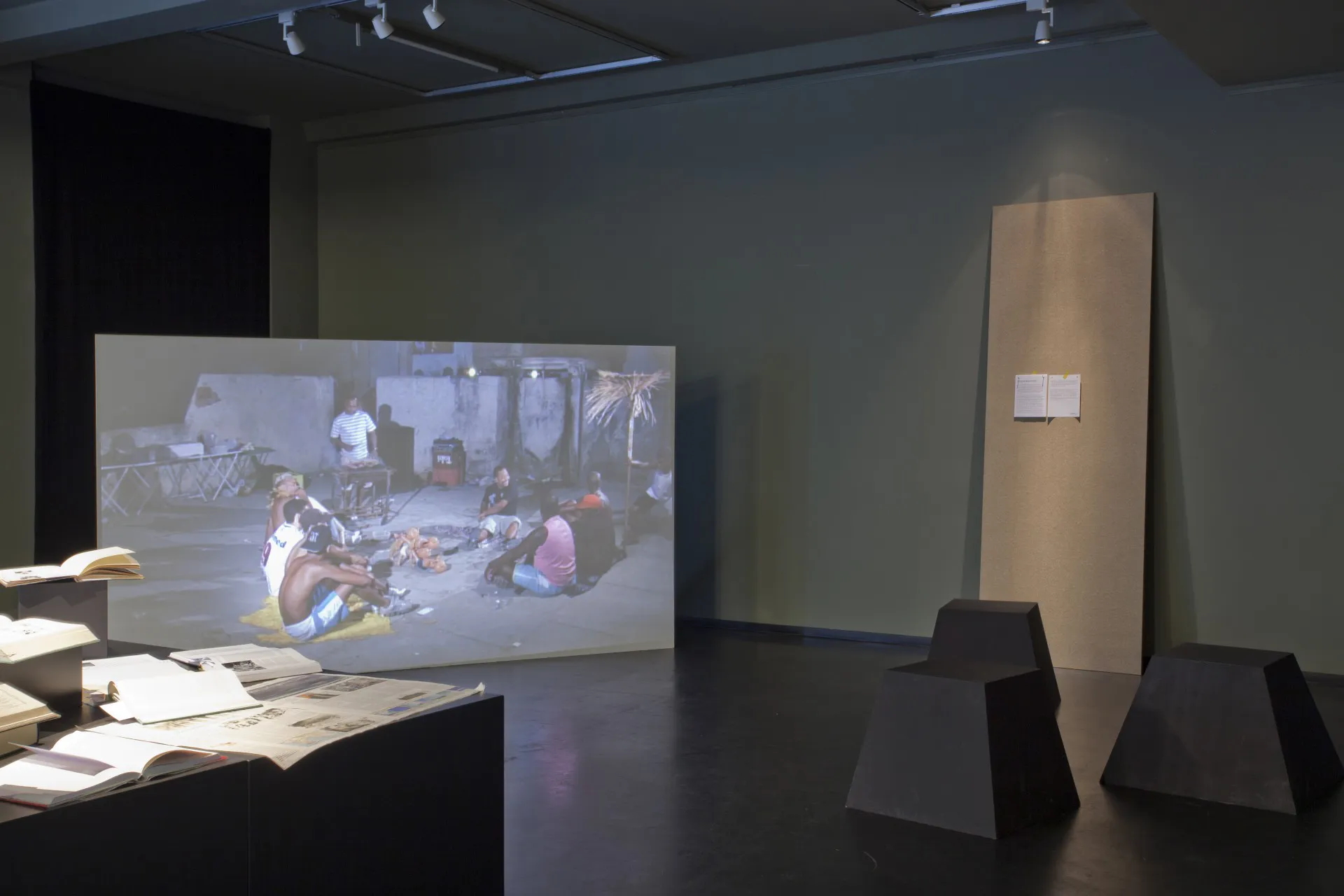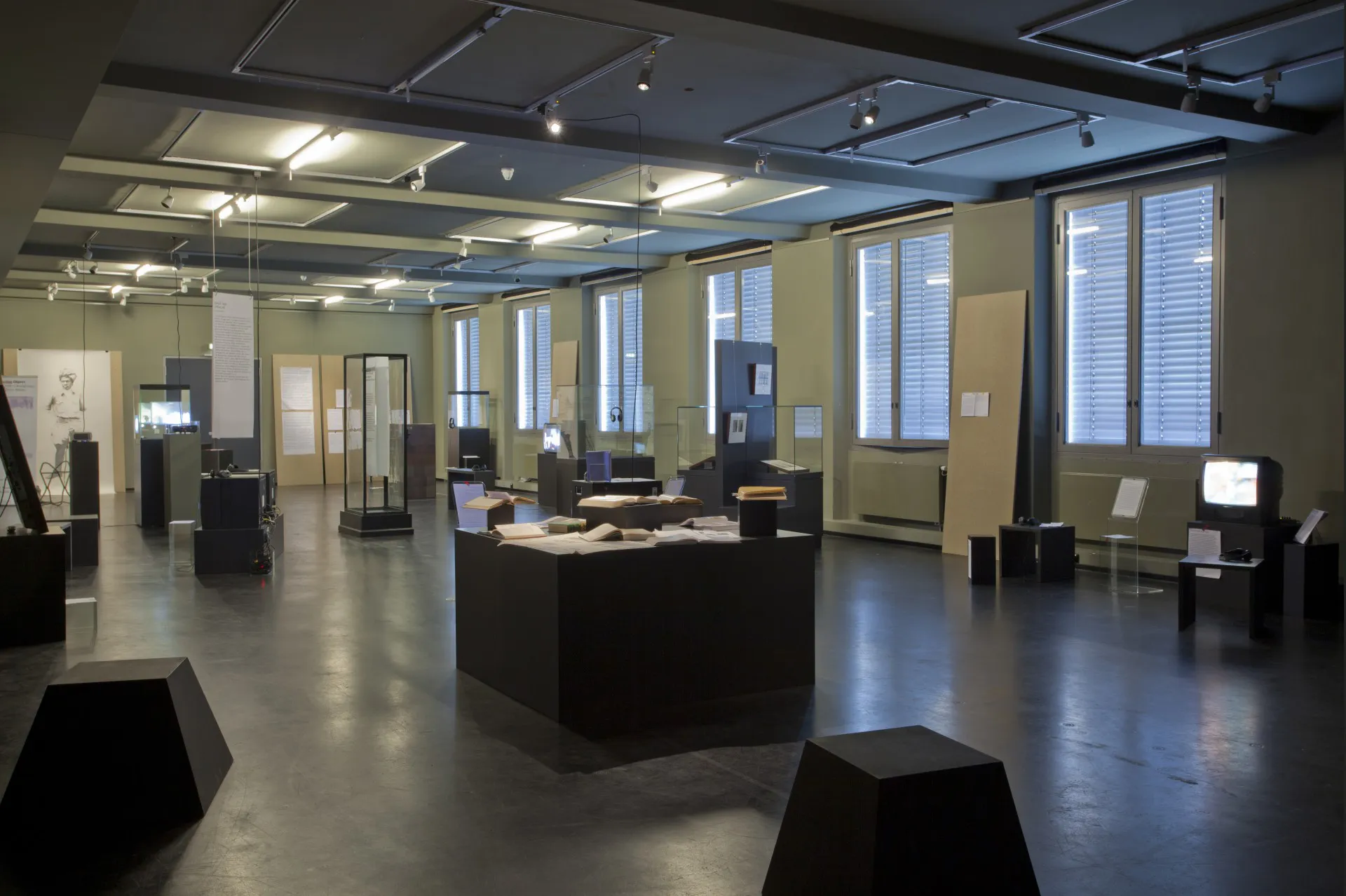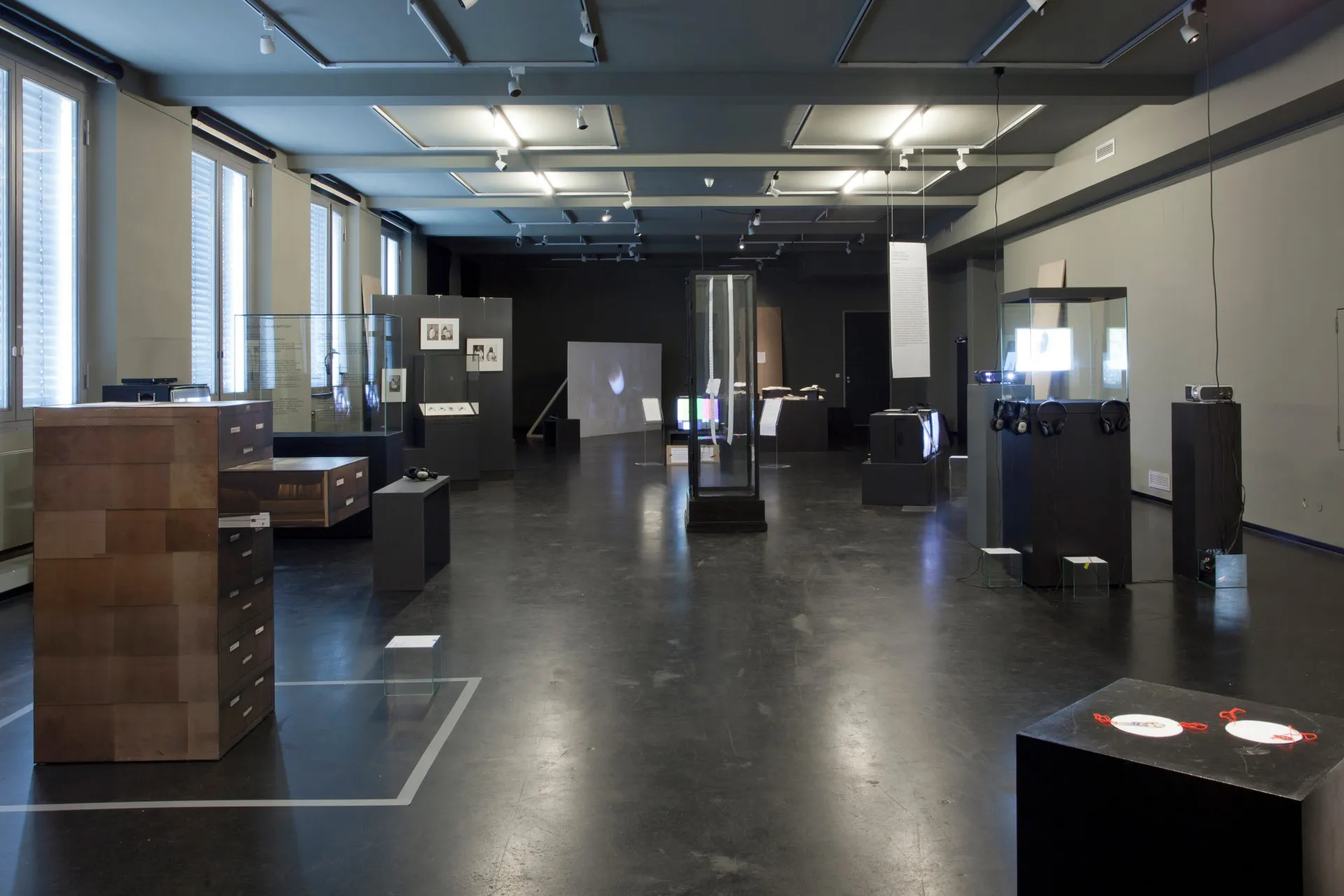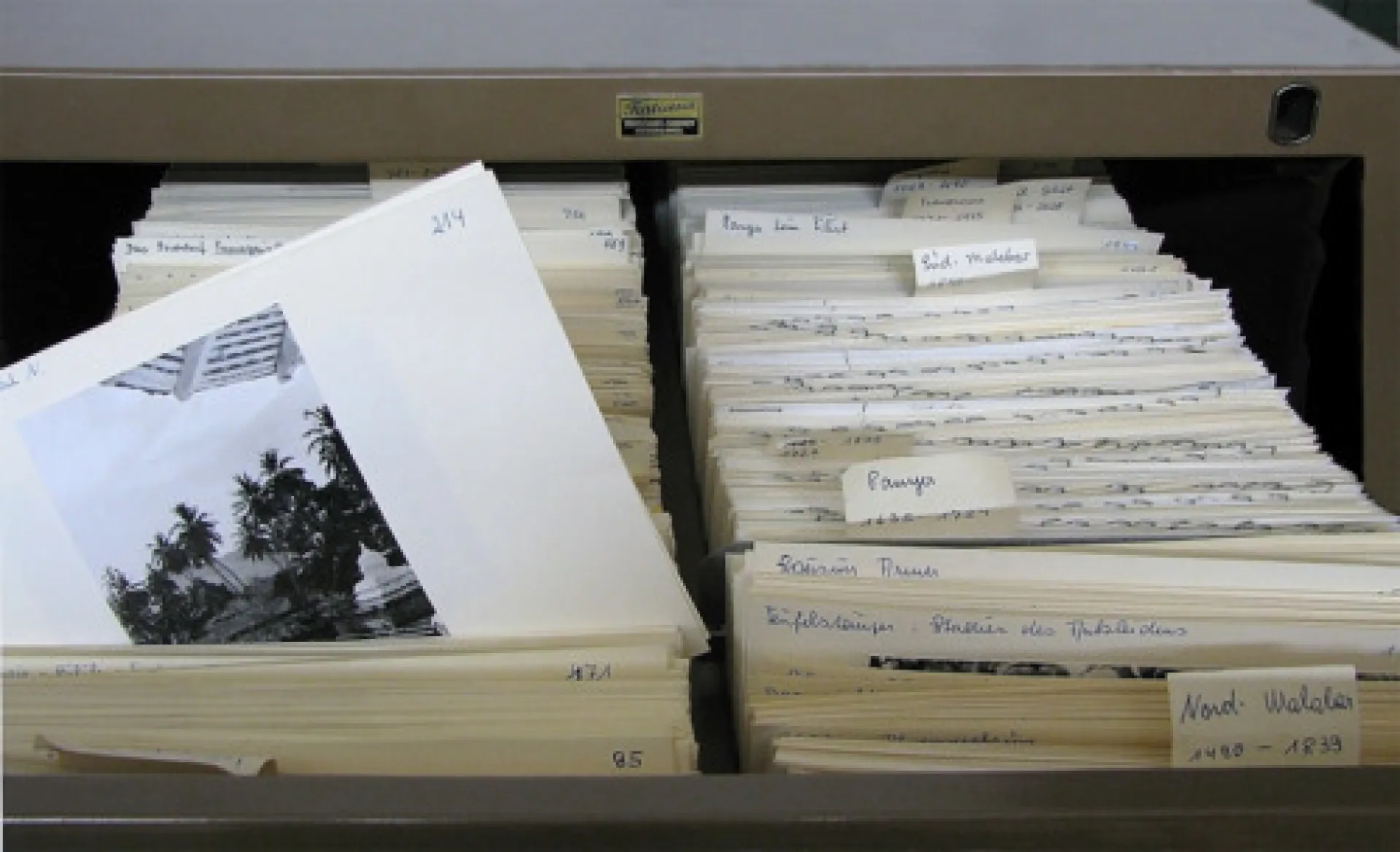On 21 June 2012 the project The Subjective Object – (Re)Appropriating Anthropological Images opened at the GRASSI Museum für Völkerkunde zu Leipzig – an experimental arrangement combining artworks, books, documentary and archival material on topics such as identity, the gaze and the post-colonial. Taking a collection of anthropological and ethnographic photographs recorded in India in the 1920s by Egon von Eickstedt (1892-1965) as its starting point, The Subjective Object traces transcultural encounters of anthropological imagery in a trajectory spanning Leipzig & Dresden in Germany and Tejgadh & New Delhi in India.
A German anthropologist and race theorist, Egon von Eickstedt was a key figure of his field during National Socialism. After World War II he became a professor of Anthropology at the University of Mainz from 1946. With a photographic estate comprising images that relate both to ethnology and physical anthropology his research focused on the Adivasi, the indigenous population of India.
On invitation of the GRASSI Museum für Völkerkunde we – a team of young and emerging curators – were asked to work with around 12,000 uncharted photographs that Eickstedt brought back from his “German India Expedition” (1926-1929). According to Eickstedt himself this collection comprises “anthropological measurements of 3771 individuals, a photographic yield of altogether 11,695 images (7,441 typological and 4,254 ethnological images) as well as diaries, family trees, individual observations, blood samples, osteological and primate material.” Physical anthropology as practised by researchers like Eickstedt used scientifically recorded data in order to define not only an unambiguous sense of “race” but also of cultural difference – a practice that today is seen as highly problematic. In the process of deciding how we should approach Eickstedt’s photographic material in particular, we began by asking more generally whether and how these kind of precarious images of the “other” that emerged as part of anthropological collections worldwide could or should still be displayed today.
Artistic positions
The artworks and events presented as part of the exhibition demonstrate how international artists have appropriated ethnology and anthropology critically into their practice. Philip Scheffner’s film The Halfmoon Files traces the history of a Prussian ethnographic audio-archive while attempting to reconnect some of its biographic and personal data with the contemporary reality outside – both in Germany and India. Other artists such as Pushpamala N from India, Nástio Mosquito from Angola or the artist duo Dias & Riedweg (br/ch) critically rupture colonial identity formation processes of Self and Other through the techniques of staging and mockery. Raqs Media Collective address processes of collecting, selecting, positioning and showing in their work The Untold Intimacy of Digits (2011). In response to the Eickstedt-archive the artist Rajkamal Kahlon (us/in) has created an entirely new work which will be premiered on the occasion of The Subjective Object.
The exhibition design was conceptualised in collaboration with Leila Tabassomi, a young designer working from Leipzig, and is based around appropriating the museum’s existing display architecture such as glass vitrines in unconventional ways.
Conditions of the Adivasi people
Besides presenting perspectives from contemporary art and theory, the project also centers around the contemporary living conditions of the Adivasi people – Eickstedt’s former subjects of study. Acknowledging the impossibility to reflect them in their complexity, several documentary sources inform about these people’s struggle for survival in a globalised India.
Curated by:
Nicola Beißner, Anna Dobrucki, Anna Jehle, Julia Kurz, Anja Lückenkemper, Barbara Mahlknecht, Katja Thekla Meyer, Ksenija Orelj, Katharina Schniebs, Nefeli Skarmea, Anna-Sophie Springer, Edda Wilde, Olga Wostrezowa
With artworks and movies by:
Lars Bergmann, Biju Toppo/Meghnath, Dias & Riedweg, Nástio Mosquito, Pushpamala N, Rajkamal Kahlon, Raqs Media Collective, Philip Scheffner und Walter Wippersberg
and by
Paul Altmann, Nora Bodnar, Kathrin Freytag, Thomas Janitzky, Stephan Murer und Marike Schreiber (Studierende der Medienkunst, Klasse Helmut Mark / Kilian Schellbach, HGB)
Exhibtion design in cooperation with:
Leila Tabassomi
KdK-Team:
Beatrice von Bismarck, Benjamin Meyer-Krahmer, Thomas Weski
In cooperation with:
GRASSI Museum für Völkerkunde, Leipzig,
Staatliche Kunstsammlungen Dresden

